Soul searching in trans bodies
Pakistan’s parliament is preparing to change a law that granted key rights to transgender people in 2018.
The lawmakers want to modify a basic definition, saying that rights can be granted only to intersex people—whose reproductive anatomy doesn’t fit the typical definitions of male or female. These lawmakers accept intersex people as God’s creation.
They say rights cannot be granted to transgender people. Transgender people perceive their gender to be different from the sex they were assigned at birth. The lawmakers thus reject transgender men and woman as an aberration.
They assert that their claims about gender identity are the outcome of a (so-called) ‘mental illness’ that needs to be treated. Any attempt by transgender people to assert their gender identity is viewed as a threat to the moral fabric of society.
Transgender people are commonly known as khawajasira in Pakistan. The terms in Islamic literature for them are khunsa for intersex and Mukhannas for transgender.
In the absence of anatomical evidence why should transgender people be allowed to live the life they want to live? And what does it mean for society at large?
Fortunately, answers to these questions have been in the works in Pakistan for decades, long before the current debate on transgender people started and judgments were clouded—so clouded that a TV drama recently came under attack by opponents of the 2018 transgender rights law, namely “Transgender Persons (Protection of Rights) Act, 2018”.
Some answers lie in a piece of short fiction and a non-fiction book which is probably the most incisive study on Pakistani khawajasira.
Never to be married

Around forty years ago Urdu author Mohiuddin Nawab published a short story about an intersex woman called ‘Sadaa Suhagan’ (literally, ‘perennially married woman’). She was born to a rich father who had to give her up to khawaja siras after they made a dire threat. The threat is revealed towards the end of the story.
In the Indian subcontinent, young women are given blessings with the phrase ‘sadaa suhagan raho’ implying that they should abhor being divorced or widowed. But in the case of that intersex woman, the blessing is tainted with irony: As an intersex person, she could marry no one and hence could never be at the risk of being divorced or widowed.
This Sadaa Suhagan resists advances from a man who believes she is a cis woman. Unlike other khawajasiras she does not beg or earn as a sex worker, because her rich father pays the khawajasira gang that took her away. She is seen as a pious person with powers to bless people.
However, she eventually capitulates to the man claiming to be her lover, believing that platonic love was possible. The lover would not settle for anything less though. She is defiled and ruined, and dies at the end.
This is when the original threat made to her father by khawajasiras is revealed. They had warned the father that if he did not let go of the intersex child, they would tarnish her reputation when she grows up and it would bring him a bad name. They would accuse her of being a loose person and everyone would believe it since she was an intersex person. The stigma was so profound that her father gave her up.
The story, which also make passing references to khawajasira ‘mistresses’ of men who bury them in the dead of night when they die, underscores a simple fact: intersex or transgender people in our part of the world have been seen only as sex objects. They could attach no other meaning to their lives.
The third gender or so many of them
Exactly 20 years ago in 2003, Akhtar Baloch began research for his non-fiction book that he titled Teesri Jins (The Third Gender). It is the most incisive study into khawajasira lives and even covers their esoteric language, the Farsi Chand.
Baloch interviewed all types of ‘real’ and ‘fake’ khawajasira for the book, including intersex, transgender, and cross-dressing male sex workers.
I translated the book into English while working with Baloch between the years 2015 and 2022 (during this period I also translated his blogs for dawn.com) handing him over the final draft in June 2022, two months before he died of a sudden cardiac arrest.
Teesri Jins contains interviews with around two dozen khawajasira and a few of their lovers.
The khawajasira could be divided into the following broader categories, although Baloch’s book offers a more nuanced explanation.
Intersex persons usually given up to khawajasira groups at birth.
In many parts of the Indian subcontinent, when a male child is born, a group of khawajasira arrives at his home, singing and dancing. They somehow examine the child to confirm if he is male indeed. If they find that it is an intersex child, they declare him as one of their own. They would often fight with the parents to take him away.
Intersex khawajasira often live under a guru even when they are old enough to live independently. Some of them rise to become guru and head marhis or deras — houses where several khawajasira live under one roof.
Cross-dressing males are ‘fake’ khawajasira who are men but like to wear women’s clothing. Most of them are sex workers. Intersex and transgender khawajasira abhor them and see them as usurpers. These fake khawajasira are not allowed at marhis.
Contrary to popular belief, sex work is not the main source of income for khawajasira. In fact, they look down on sex workers. Fakiri or seeking alms from people is what they consider acceptable and noble. You call a khawajasira fakir, she will be happy. Dancing at events to earn money is also acceptable. Hence, any fake khawajasira begging or dancing in an area is a trespasser.

Being a transgender khawajasira is the most problematic of all. The absence of anatomical evidence means you first need to prove to the khawajasira community that you are a transgender person and not a cross-dressing male. Being a transwoman means you were born male but feel like a woman. [We don’t deal with the debate surrounding transgender persons who are born female but feel like a man here.]
But how could you persuade the khawajasira community that you are a (trans) woman with a male body? Some of the transgender people undergo castration to prove that they are not ‘fake’.
Unlike cross-dressing fake khawajasira, transgender persons are not turned away from khawajasira houses and they live with intersex khawajasira. However, these uncastrated transgender persons are viewed with suspicion. They are called akhwamoorat. Once an transgender male undergoes castration, he is called nirbhan, a deviation of Sanskrit’s nirvana.
Ironically, nirvana or nivran signifies the end of internal strife and start of peace, but a transgender person has to undergo illegal and painful castration to achieve that nirvana and win acceptance that it brings among khawajasira.
This is only the first part of their trial. While the khawajasira community would warmly accept a transgender person after castration, the outer world continues to view him with suspicion. And since castration is considered both illegal and unIslamic, he is also an offender and sinner.
But the question is what compels a transgender person with male anatomy to go down that path of pain, suspicion, and hatred? Why doesn’t he choose to live as a man in society?
The soul
When Akhtar Baloch spoke to khawajasira, a word was used again and again, especially from those with higher levels of self-awareness: Soul.
Bindiya Rana, a khawajasira leader, articulated it in the following words:
“Mukhannas khawajasira have beards and moustaches. Now, if Allah has created you in the shape of a man but has inspired you with a female soul, could you fight against the Lord of the Universe? They [the transgender people] operate under their inherent instincts. Today, in this digital era you can make a man out of a woman and vice versa. But can you change their hearts. You cannot change how Bindiya Rana feels or walks, can you?”
Since transgender persons, or transwomen to be precise, feel like women, they have a gait that many would call feminine. The same goes for their way of speaking.
This is the doing of the ‘soul’, at least this is what the khawajasira community accepts as fact.
Khawajasira Laila told Baloch that uncastrated transgender people are also accepted among the khawajasira and allowed to beg with them, only because they have a feminine soul.
This is how she explains it: “One can beg without being a nirbhan (castrated) because our soul is feminine. Such a soul is a gift from God.”
She said that she had learnt that religion also says children born premature – those born on the sixth out of a total of eight challaas (eight challas equal three trimesters) – have some feminine mannerisms.
A feminine soul is the reason transgender people don’t identify with the gender they were assigned at birth.
This explanation should suffice but it does not for some of our lawmakers and many Muslims across the world.
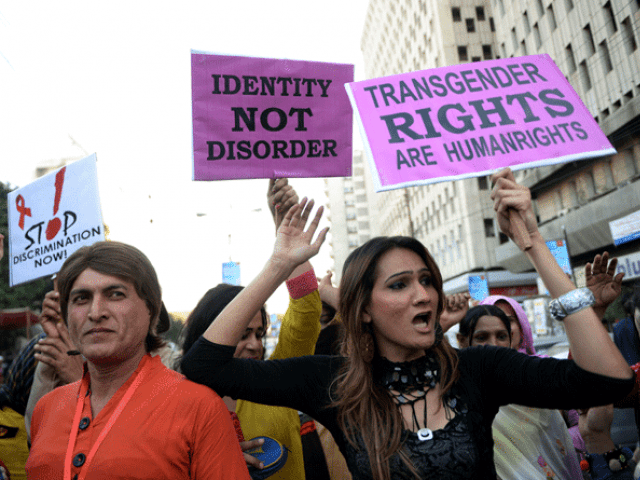
They think the urge of the so-called feminine soul must be suppressed because it manifests a mental illness which should be purged.
Indonesia, the largest Muslim country in the world has faced a similar dilemma. There were around 3,100 transwomen in the country in 2015. They are called waria in Basha, the word being a combination of wanita (woman) and pria (man).
In 2016, media reports said that the Indonesian Psychiatric Association had claimed that transgender people have mental disorders. This was followed by a response from the American Psychological Association challenging the IPA claims.
However, this was a half truth. The IPA findings focused on the sexual aspect of such lives. This had nothing to do with ‘soul’. And it was not transgender specific.

The Indonesian Psychiatric Association, in fact, said that homosexuals and bisexuals were in danger of developing a psychiatric disorder but they could avoid it if they “maintain their mental health by guarding their behaviour, habit, healthy lifestyle, and increase their ability to adapt to their social environment”.
It simply means if people, regardless of their gender identity, live a “moral” life their mental health would improve.
In Indonesia and Pakistan, khawajasira have set up religious seminaries for themselves, yet they continue to face discrimination.
Conflating gender identity with sexual orientation
Pakistan’s 2018 transgender rights act allows transgender people to identity differently from the sex they were assigned at birth. This was revolutionary because it accepted the idea of “gender expression.” Intersex (khunsa), castrated transgender, and uncastrated transwomen come under the definition of ‘transgender person.’
In other words, the law listened to the souls.
The lawmakers now want to reverse the law to exclude castrated and uncastrated transgender persons from the definition.
Castration is haram in the Shariah and Islam only accepts khunsa (intersex) as a gender identity, they argue.
Khunsa too need to identify as either male or female based on their dominant gender characteristics.
This is the predominant view in the Islamic world, though two fatwas were issued in the late 1980s supporting sex reassignment surgery for mukhannas.
This part of the debate could be settled only by the ulema, especially the Council of of Islamic Ideology, which in September 2022 said that some of the provisions of the law were not compatible with the Shariah.
The Council said the law, as it stood, could lead to “new social problems”.
Generally, a transgender or mukhannas is viewed as a danger to society, because he can engage in sex being a biological male.
A transgender person may also approach, or be approached by men and thus engage in homosexuality because he is, again, biologically a male.
Then you have the possibility of homosexuals hiding behind transgender identities, they argue.
This and several other social problems arise from our fixation with the perceived sexual orientation of transgender people.
Gender identity and sexual orientation are two distinct things. Conflating them compounds our confusion about transgender people. Most transgender persins don’t like to be clubbed with gay and lesbian people, categories that describe sexual orientation and not gender identity.
In the short story by Mohiuddin Nawab, Sadaa Suhagan never desired a sexual relationship, yet everyone, including her lover, other khawajasira and society at large saw her as a sex object.
This exactly is how we interpret transgender identity. We don’t listen to the soul.
For the latest news, follow us on Twitter @Aaj_Urdu. We are also on Facebook, Instagram and YouTube.





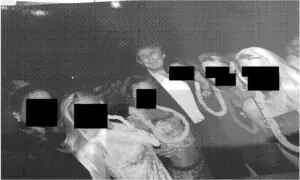

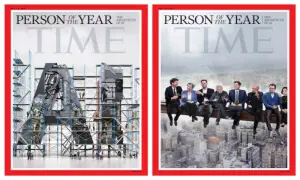
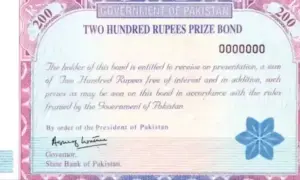
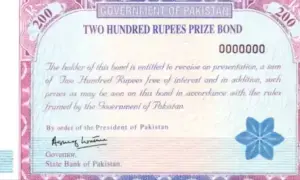







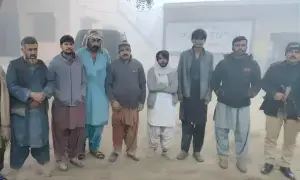


Comments are closed on this story.